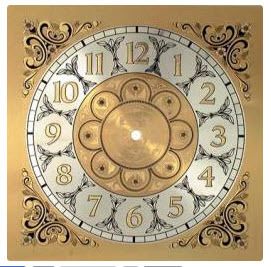
Modern clock electric motors are electronic timekeepers that obtain their accuracy from crystals. Clock electric motors are additionally called clock activities in the sell that they relocate the hands, via a collection of gears, right into correct setting (about the characters or icons published on the dial). Here we reveal not only the information of how these devices work but also their peculiarities and refined tricks.
Historic clock motors did not run electronically but mechanically. A coiled springtime or hefty weight used torque to a flywheel, which slowly turned a shaft with hands connected to the other end. A pendulum as well as escapement operated in tandem to make certain each tick was precisely one 2nd in duration.
Today’s motors achieve the exact same result but do so by partitioning a consistent stream of pulses released by the quartz crystal. The pulses are counted making use of an electronic register, and each time the appropriate limit is surpassed causes the recorded number of seconds to increment. Likewise, register counts with sixty-fold durations increment the minutes as well as hours.
By doing this, software program has actually superseded intricate gizmos of equipments in elaborate ratios as the idiosyncratic engine of the clock electric motor. This manages a pushing of the envelope in regards to style and also programming. It has allowed the tracking as well as screen of ever before even more fascinating useful mixes.
The most widespread timekeeping function is that which reveals a 12-hour clock cycle. Two or 3 hands (relying on the absence or visibility of a pre-owned) spin amongst the loads figures revealed. The 24-hour motion (a mild foible) visits default with electronic clocks; analog variations are readily available though much less common, as two times as several figures have to be pressed along the dial perimeter.
Second hand actions can at times appear distinctive, in that the motor might support either ranges. One kind has a momentary jerk and also pause that comprises a tick, which could be audible or inaudible. The other kind, a move previously owned, removals continuously, efficiently, and also calmly.
Then you might discover clock motors that removal four hands, expanding the cycle substantially. The extra hand shows the day of the week (a seven-day cycle) or the date of the month (31-day cycle). This needs a particularly calibrated dial.
Rather than (or in addition to) something to report the time, you might have an interest in a weather movement, revealing temperature, moisture, pressure, or tide level. Though trends are basically periodic, weather condition electric motors in general are not intermittent. Unlike clocks, their hands indicate the worths of sensors between 2 extremes.
Therefore, the climate electric motor has to be coupled with a thoroughly adjusted dial and also suitably sized hand. Points likewise need to be initialized properly.
Note that a trend motion has to consider both lunar and solar cycles. Local problems likewise influence the time lag in between the placement of the moon and also the event of high tide; additionally, resonances of tidal containers determine the amount of variant in trend degree amplitude. Thus, each trend “timepiece” must be both generally and particularly calibrated.
Let’s not forget about the subtler affectations. The conventional clock activity is inadequate for actually huge clocks since the hands are as well hefty. So when the clock face has a span that exceeds 8 or 9 inches make sure to purchase a “high torque” movement.
Various other features that make your clock distinctive consist of, chiming, alarms, and pendulums. These are all add-on results that do not strike the procedure of the gadget, although you could should make certain that the motor supports them. Anyway, your success as a specific niche clockmaker is bound to improved by recognizing idiosyncratic clock motors.
